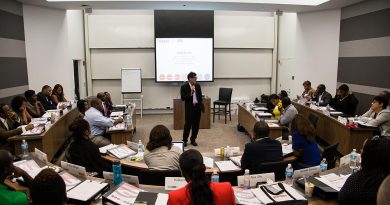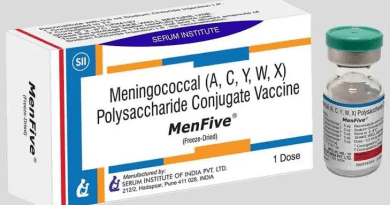Medical Tourism can help achieve universal health coverage by Ashish Rangra
Medical Tourism or Medical Value Travel or medical tourism may be able to contribute to the achievement of universal health coverage (UHC) by granting access to healthcare services that may not be available in a patient’s native country and resulting in better health outcomes. MVT has grown in popularity in recent years as consumers look for affordable, high-quality healthcare options. It also helps to lessen the strain on domestic healthcare systems.
Emerging technologies, shifting economic and demographic patterns, and a new era of healthcare consumerism have all contributed to the quickly changing global healthcare landscape. The cross-country and cross-sector convergence brought forth by this healthcare evolution has boosted the global medical tourism business.
Around 14 million people travel across borders for medical treatment, and the global market for medical travel is estimated to be worth between $60 and $80 billion. A number of stakeholders play significant roles in maintaining the safety and caliber of medical care for individuals who go overseas for their healthcare requirements, including those involved in medical value travel (MVT).
Participants in Medical Value Tourism Ecosystem
Stakeholders are essential to MVT because they contribute special resources and skills. They also have an impact on the standard and security of medical care given to MVT patients. Since they seek medical care abroad, patients are the main participants in MVT.
The safety and caliber of medical operations are crucially dependent on the services that healthcare practitioners deliver to medical tourists. They must follow the rules and re
Medical Value Travel / Medical Tourism
Payers contribute significantly by paying all or a portion of the cost of medical care and travel expenses. Payers can include an employer organization that finances its employees, the government of the source nation, which pays for the treatment of its nationals overseas, or insurance companies that offer patients cross-border financial protection.
In order to make the procedure simple, affordable, and safe, facilitators help patients with the logistics of traveling overseas for medical treatment.
It is the role of regulatory bodies, such as governmental organizations or medical boards, to make sure that healthcare professionals that offer services to medical travelers adhere to a set of quality and safety criteria. Governments can help MVT by creating laws and regulations that encourage the expansion of the sector.
The importance of stakeholder partnerships
Collaborations amongst Medical Value Travel stakeholders might be crucial to the expansion and development of the sector. Partnerships are crucial in MVT now more than ever because they may assist improve patient access, affordability, and quality of care.
By addressing all areas of a patient’s journey, these collaborations can provide value for the patient and offer a 360-degree experience. Leading Indian hospital chains like Apollo and Fortis have already established International Patient Assistance Centers in a number of nations, working in collaboration with local healthcare providers, travel agencies, diplomatic missions, and wellness tourism organizations to provide medical tourists with a seamless experience.
Stakeholder collaborations can accomplish this in the following ways:
Consistent coordination: To guarantee that patients have a seamless experience throughout their medical journey, healthcare providers, travel companies, and other stakeholders can collaborate. This may entail arranging for essential tests and procedures, scheduling medical consultations, and offering post-treatment follow-up care.
Vacation firms and healthcare doctors can collaborate to develop personalized vacation packages that are tailored to each patient’s specific need.
Travel Medical Value
Partnerships’ Function in MVT
Support with language and culture: To assist patients in navigating the local culture in a foreign country, healthcare professionals and travel companies can offer language and cultural support. To ensure that patients feel at ease and confident during their medical journey, this can include offering translation services, cultural training, and other forms of assistance.
Patient-centered care: Healthcare professionals can collaborate with patients to create individualized treatment programs that take into account their particular requirements and preferences. This may entail considering the patient’s medical background, cultural background, and other elements that could affect their care.
Care quality: By collaborating, regulatory agencies and healthcare organizations can make sure that patients receive high-quality care at every stage of their medical treatment. Making sure healthcare providers have the appropriate licenses and accreditations may fall under this category.
Care after treatment: Medical professionals can collaborate with patients to make sure they have access to care after treatment once they are back home. To guarantee that patients receive the required treatment and assistance, this may entail working with regional healthcare professionals.
Possibilities for Collaboration
Depending on the particular requirements and objectives of patients and stakeholders, these cooperation might take many different shapes. Here are a few instances of potential partnerships:
Cross-border partnerships: Through alliances between healthcare providers, travel companies, and other stakeholders, stakeholders in various nations can work together to encourage medical value travel across borders.
sector organizations: Industry associations can offer a venue for participants to discuss ideas, share best practices, and create plans to encourage the expansion of the sector.
Stakeholders can guarantee that patients have access to high-quality care and assistance as well as that the sector continues to grow and thrive by cooperating to establish a supportive climate for medical value travel.
Travel for medical purposes in India
One of the nations where medical value travel is flourishing is India. The advanced healthcare system in India rivals the best in the world. Reputable medical experts undertake complex surgical procedures in a top-tier international hospital at a fraction of the cost that would often be needed in other countries. As a result of its emphasis on conventional treatments via AYUSH, India has also grown to be a popular destination for yoga and wellness. With a projected market value of $ 5 to $6 billion in 2019, the number of overseas patients climbed from 0.43 million in 2016 to 0.7 million in 2019.
For India, a strong public-private cooperation has been crucial in advancing the national plan and vision for medical value travel
The Indian government has taken important steps to support the MVT sector, including 100% foreign direct investment in medical infrastructure and tax breaks for companies who export medical services.
Travel Medical Value
The Government of India is developing a one-stop digital portal to integrate all relevant parties (Hospitals, Facilitators, lodging facilities, etc.). This portal will also enable end-to-end patient journey monitoring, starting with visa assistance, treatment in India, and post-procedure care. This will guarantee the efficient operation of the entire ecosystem, providing overseas patients with a hassle-free travel.
A plan for medical value travel in the future
In addition to the current Memorandums of Understanding between governments, hospitals, and facilitators, other potential worldwide channels for fostering collaboration among stakeholders include:
Creating international networks: To share knowledge, exchange best practices, and cooperate on R&D projects, healthcare providers, travel agencies, and other stakeholders can create international networks. This may entail cooperating with organizations in other nations to exchange knowledge and skills.
Technology investment: Investing in technology can improve cross-border cooperation among industry participants in the medical value travel ecosystem. This may entail creating new technologies that enhance patient care and assistance as well as employing digital platforms to help stakeholders communicate and work together.
The urgent requirement is to create a distinctive roadmap for medical tourism’s future through focused efforts at efficient collaboration. Ease of travel, hassle-free e-visas, medical technology, information sharing, insurance plans that reward medical travel, and the promotion of seamless relationships between patients and providers across borders are essential.
The ability of the globe to coordinate its efforts to achieve the Sustainable Development Goal of preserving everyone’s health and well-being is essential to MVT’s success. SOURCE: Ashish Rangra, Senior Investment Specialist, Investindia; investindia.gov.in
.




